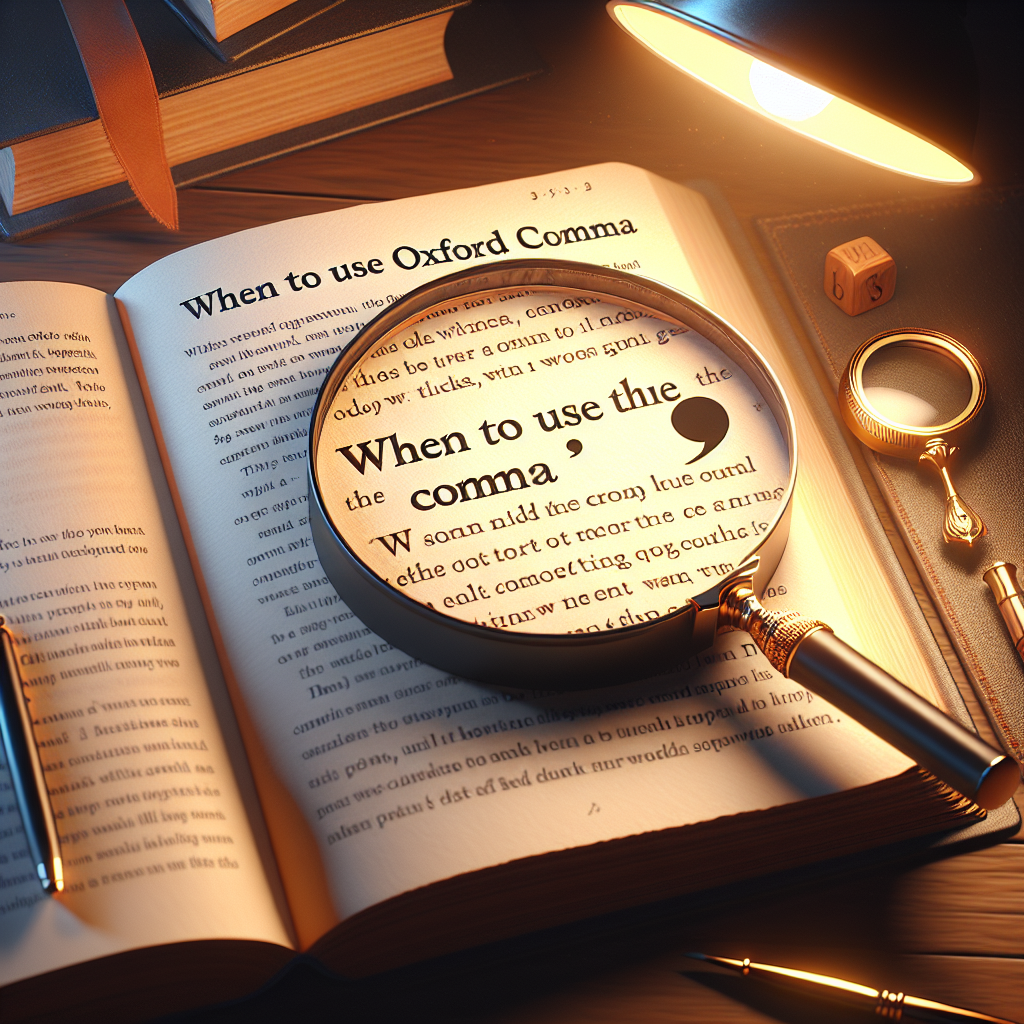When to Use the Oxford Comma
Have you ever been in a situation where you’re unsure whether or not to use the Oxford comma? It’s a common grammatical debate that can often leave writers feeling perplexed and unsure of what the correct choice is. In this article, we will discuss when it’s appropriate to use the Oxford comma and when it’s best to leave it out.
What is the Oxford Comma?
The Oxford comma, also known as the serial comma, is the final comma in a list of items. For example, in the sentence “I need to buy milk, eggs, and bread,” the Oxford comma is the one after “eggs.” Some style guides recommend using the Oxford comma consistently, while others advise against it.
When to Use the Oxford Comma
One situation in which it’s important to use the Oxford comma is when it helps to clarify a list of items. For example, consider the sentence “I would like to thank my parents, Oprah Winfrey and God.” Without the Oxford comma, it could be interpreted that Oprah Winfrey and God are the writer’s parents, which is likely not the intended meaning. By using the Oxford comma, the sentence becomes clearer: “I would like to thank my parents, Oprah Winfrey, and God.”
Another instance where the Oxford comma is beneficial is when a list contains elements that already include commas. For example, in the sentence “I need to buy milk, eggs, cheese, and ham, bread,” using the Oxford comma helps to distinguish between the items “ham” and “bread,” which could be confused when read without the final comma.
When Not to Use the Oxford Comma
While there are many cases where using the Oxford comma is helpful, there are also instances where it is unnecessary. For example, in sentences where the list items are simple and there is no risk of confusion, omitting the Oxford comma can help to streamline the writing. An example of this would be in the sentence “My favorite colors are red, blue and green.”
Additionally, some style guides, such as the Associated Press (AP) Stylebook, recommend against using the Oxford comma in journalistic writing. In these cases, it’s best to follow the guidelines set out by the specific style guide being used.
Conclusion
Overall, the decision of whether or not to use the Oxford comma ultimately depends on the context of the sentence and the style guide being followed. In situations where clarity is key, such as in formal writing or when listing complex items, using the Oxford comma can help to avoid ambiguity. However, in cases where simplicity and brevity are valued, leaving out the Oxford comma may be the best choice.
Remember, the most important thing is to be consistent in your usage of the Oxford comma throughout your writing. By following these guidelines, you can ensure that your writing remains clear and concise.
For more tips on improving your writing skills, check out Edit Mojo blog posts for helpful advice and strategies.
#Oxford #comma
